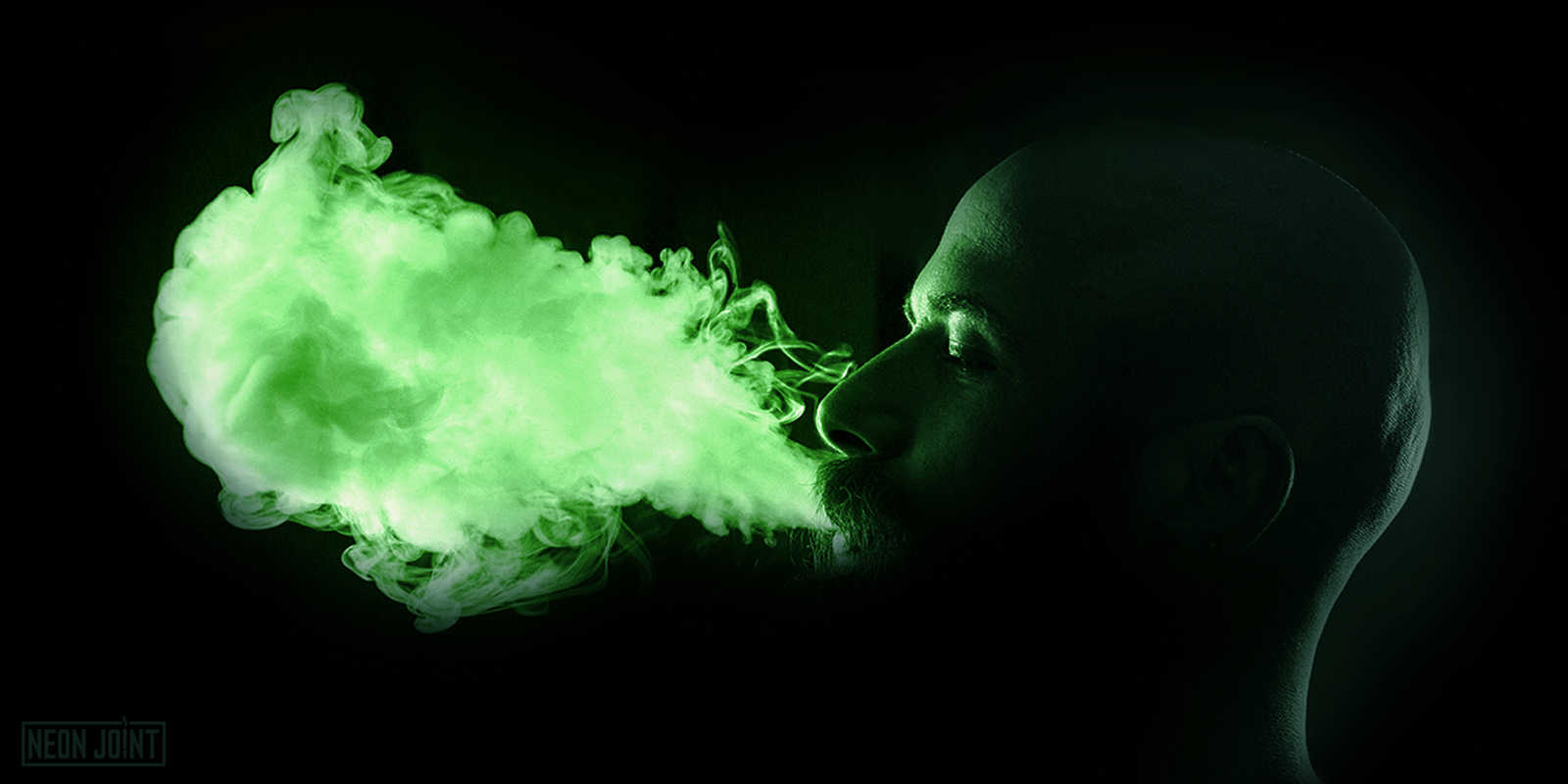Vaping is a increasingly popular method of consuming cannabis and tobacco products. With its rise in popularity, vaping has also raised numerous health concerns from federal regulators and the general public. This makes it important to understand the truth and facts behind vaping.
This guide will take you through the basics of vaping, the range of devices available, and how they work. It will also explain the details behind the health concerns so consumers can make an informed purchasing decision when it comes time to vape.
What is Vaping
Vaping is the act of vaporizing a concentrated liquid or oil that often contains either THC, CBD or nicotine.
The key difference with smoking is that you aren’t actually burning anything. The liquid is heated by the device to the vaporization point then inhaled by the user, rather that creating smoke using the combustion of a lighter.
Vaporizing cannabis and nicotine have become extremely popular due to several factors:
- Ease-of-use
- Portability
- Discreet nature
- Variety of flavors
- Social media presence
What is in a Vape?
Vapes contain liquid or oil that can have a range of substances. The primary ingredient is often THC, CBD or nicotine.
All of these typically contain a range of additives to aid in the vaporization process. These additives help to vaporize the liquid or oil at a lower required temperature.
Additives commonly found in vapes include propylene glycol, vegetable glycerin, and non-oil food grade flavorings. These additives are all safe for consumption. Additives that you want to stay away from are vitamin E acetate, diacetyl, acetyl propionyl, and acetoin.
How Long Has Vaping Been Around?
Vaping has been around for about a decade. Its popularity started as an alternative to smoking cigarettes. Many people started using vape devices that contain nicotine as a way to quit smoking.
The vaping trend eventually made its way to the cannabis space as legalization and popularity have spread in recent years.
Vaping is now seen as an innovation in both the nicotine and cannabis markets. Manufacturers are continuously bringing upgraded vape devices into the market with sleek and discreet designs, making it easier than ever to puff on a vape.
With the rise in popularity, vaping has reached a level where competitions and conventions are a common place. A strong example of these conventions are Vapefest, Electronic Cigarette Convention, International Cloud Championship in California, Shenzhen e-Cig Expo in China, the National Vape/Hemp Expo in Atlanta, Georgia, and The World Series of Vaping that takes place in Las Vegas. These competitions include everything from the largest cloud, the coolest tricks, to the best custom blended juice.
Vaping vs Smoking
Vaping and smoking are two different processes that involve inhaling cannabis or nicotine products.
When smoking, you are actually using the spark from a lighter or flame to create combustion, causing the production of smoke. The smoke is then inhaled causing its subsequent effects.
Vaping is different in the sense that there is actually no combustion taking place. Instead of using a lighter or flame to create smoke, high heat is produced to vaporize the liquid or oil containing cannabis or nicotine. The vapor is then inhaled to feel the effects.
Vaping Devices
Vaping devices come in many different designs and sizes.
There are some that are made strictly for nicotine products, while others are made for cannabis concentrates. There are even devices now that vaporize your cannabis flowers.
Vape Pen
A vape pen usually consists of two parts, a cartridge and a battery used to power the vaporization process. Vape pens are the most common choice when it comes to vaping. They are often the same size as a typical pen, and many are coming in smaller more discreet sizes and designs.
Vape Cartridge
A vape cartridge is where the liquid or oil is stored. These cartridges are often pre-filled with the cannabis or nicotince-based liquid or oil, and sold at legal, licensed retailers. It’s becoming more common for vape brands to have specifically designed cartridges that fit with their batteries.
However, empty vape cartridges can also be be purchased very easily online. This has helped propel a major black market for illicit and counterfeit vape cartridges, especially in the cannabis black market. It’s very important to note that vape products should only be purchased from licensed retailers who are held to state and federal regulations.
Vape Battery
The vape battery is what powers your vape pen. Batteries come in a variety of sizes and capacities. Some batteries offer an adjustable voltage setting to raise or lower the temperature. Higher temperatures cause the liquid or oil to have a heavier burn, resulting in harder rips and larger smoke clouds. However, higher vaporization temperatures have also been linked to causing more health issues.
Batteries come with a charger, and most batteries last a couple days depending on the level of use and capacity of the battery. Some batteries have a button that must be pressed to activate the vaporization while others you just inhale. Some batteries set up with a button allow for the changing of the voltage by pressing the button a couple times in immediate succession.
Disposable Vape Pen
Disposable vape pens are an ‘all-in-one’ product that contains both the battery and cartridge in one enclosed device. They are intended to use and then dispose once the liquid or oil runs out. Because of this, they don’t require any charging or refilling.
The increase in using disposable vape pens has introduced a conversation about waste management and what can be done to minimize the impact of vape batteries and cartridges that are thrown away. Vape companies are pushing for legislation that helps to aid in responsible recycling of these vape products to lower the impact on our environment and landfills. Call your local waste management office to find out what you can do to help minimize your impact.
Flower Vape
Vapes can also be used to vaporize cannabis flowers. Usually these vapes have a screened bowl that is packed with your ground cannabis of choice. The device is then plugged in and slowly begins to bring the flowers to a vaporization temperature.
A nice outcome from vaping you flowers is that the vaporization process actually decarbs the weed, or activates the THC. This allows you to take the extra cannabis from the bowl after you’ve vaped it and use it to make cannabis butter or oil. This works because not all the THC is vaporized from the weed in the bowl. While it might take more vaped weed to make some potent butter or oil, it can be saved and it otherwise would have been tossed in an ashtray to waste.
How Vaping Works
Vaping is a relatively simple process that can be laid out in a few steps.
Step 1: Heating
First, the vaporizer rises to a temperature hot enough to evaporate or vaporize the liquid or oil.
Step 2: Inhalation
The vapor is then inhaled into the lungs
Step 3: Absorption
The particles are absorbed by the lungs and into your bloodstream, resulting in the effects of the THC, CBD, or nicotine.
Vaping Health Risks
Vaping just like smoking comes with certain health risks. While many believe it’s safer than smoking, there are still dangers to consider when vaping. Health risks include both lung and heart issues. However, these issue seem to stem from black market THC vape products.
Dangers of Vaping
Vaping can be dangerous for a number of reasons.
One major danger of vaping is the appeal to youth. Younger teens are turning to vape products due to the range of flavorings. Many also see it as a sort of status symbol. However, this is not safe for developing lungs and should be avoided until legal age.
Another danger of vaping is addiction. Nicotine is a highly addictive substance, and nicotine vape products can be just as addictive, if not more, than cigarettes.
Health dangers of vaping are becoming increasingly apparent as more studies and cases have appeared. Vaping can cause lung damage in users depending on the contaminants of the vape oil. The black market products pose a high risk, especially in light of recent lung injuries from illicit THC vape products that contained Vitamin E Acetate.
Vaping Deaths
As of December 2019, the CDC has reported 60 deaths due to vaping related illnesses. While this number is startling, it’s important to know that the CDC also found that the leading cause for most of these cases was an additive known as Vitamin E Acetate. This additive is often found in black market THC vapes and should be avoided at all costs.
Popcorn Lung Vaping
Popcorn lung is a slang term for bronchiolitis obliterans. This is when your lungs’ smallest airways are damaged, which leads to coughing and short of breath.
The known cause for this is a chemical that was formerly used to flavor microwave popcorn, known as diacetyl. This chemical is still used in e-cigarettes and vape juices, but it can be avoided by simply paying attention to the ingredients and additives on the packaging.
Second Hand Vaping
Second hand vaping is a subsequent risk that people face due to the popularity of vaping. Studies have shown that cancer causing particles are present in nicotine vapor, just as they are in nicotine smoke. It’s best practice not to vape around people who may be sensitive to being exposed to second hand vapor or smoke.
CDC & FDA Vaping Notes
The CDC and FDA have been heavily involved with the recent vaping-related lung injuries. Both offer several suggests with regard to vaping:
- First, both recommend not using THC infused e-cigarette or vaping products. This is primarily due to the recent wave of vaping-related lung injuries, which the CDC has attributed to black market products containing vitamin E acetate.
- Both recommend not using informal sources for obtaining vaping products. For example, avoid you local street dealer or online retailers for vape products. Always buy cannabis and nicotine products from licensed retailers.
- CDC suggests not adding anything to your vaping liquid or oil, as it may have an adverse effect on your health.
- FDA notes that no vaping product has been approved for therapeutic uses. Always use caution when presented with health and medical claims from cannabis and CBD brands.
- Both agencies note that no youth or pregnant women should be using any vape product, regardless of the substance.
Vaping Lung Disease Symptoms
The CDC and FDA recommend watching for these symptoms when vaping:
- Cough, shortness of breath, chest pain
- Nausea, vomiting, or diarrhea
- Fatigue, fever, or weight loss
If you are concerned about your health after using a vaping product, contact your health care provider, or you can also call your local poison control center at 1-800-222-1222.
Best Practices for Safe Vaping
The best practice for safe vaping is to buy from a licensed retailer. Everyone should be avoiding black market vendors of any vape product, whether it’s THC, CBD or nicotine. These products can contain additives and chemicals that can be harmful to your health. Do your due diligence on any brand as well before purchasing. Simply online searches can show which brands might be harmful or counterfeit in your area.



![[NJ] The Easiest Ways to Buy Weed in Buffalo A Full Guide (5)](https://neonjoint.com/wp-content/uploads/NJ-The-Easiest-Ways-to-Buy-Weed-in-Buffalo-A-Full-Guide-5-300x169.jpg)


